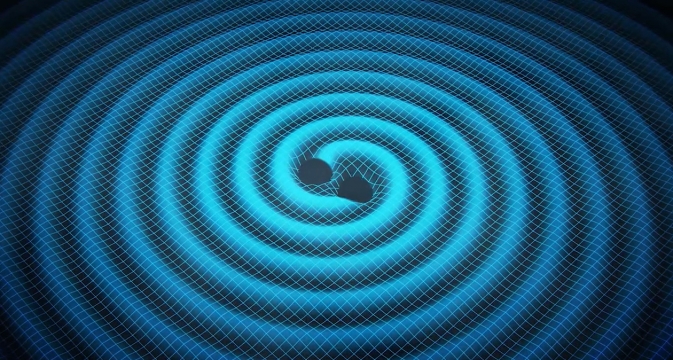
Merging black holes ripple space and time in this artist's concept. Pulsar-timing arrays -- networks of the pulsing cores of dead stars -- are one strategy for detecting these ripples, or gravitational waves, thought to be generated when two supermassive black holes merge into one.
Throughout our universe, tucked inside galaxies far, far away, giant black holes are pairing up and merging. As the massive bodies dance around each other in close embraces, they send out gravitational waves that ripple space and time themselves, even as the waves pass right through our planet Earth.
Researchers at JPL are currently developing a similar precision pulsar-timing capability for NASA’s Deep Space Network, a system of large dish antennas located around Earth that tracks and communicates with deep-space spacecraft. During gaps in the network's tracking schedules, the antennas can be used to precisely measure the timing of pulsars' radio waves. Because the Deep Space Network's antennas are distributed around the globe, they can see pulsars across the whole sky, which improves sensitivity to gravitational waves.
For a little more insight into the project see this:
http://www.nasa.gov/centers/jpl/news/pulsar20131106.html
